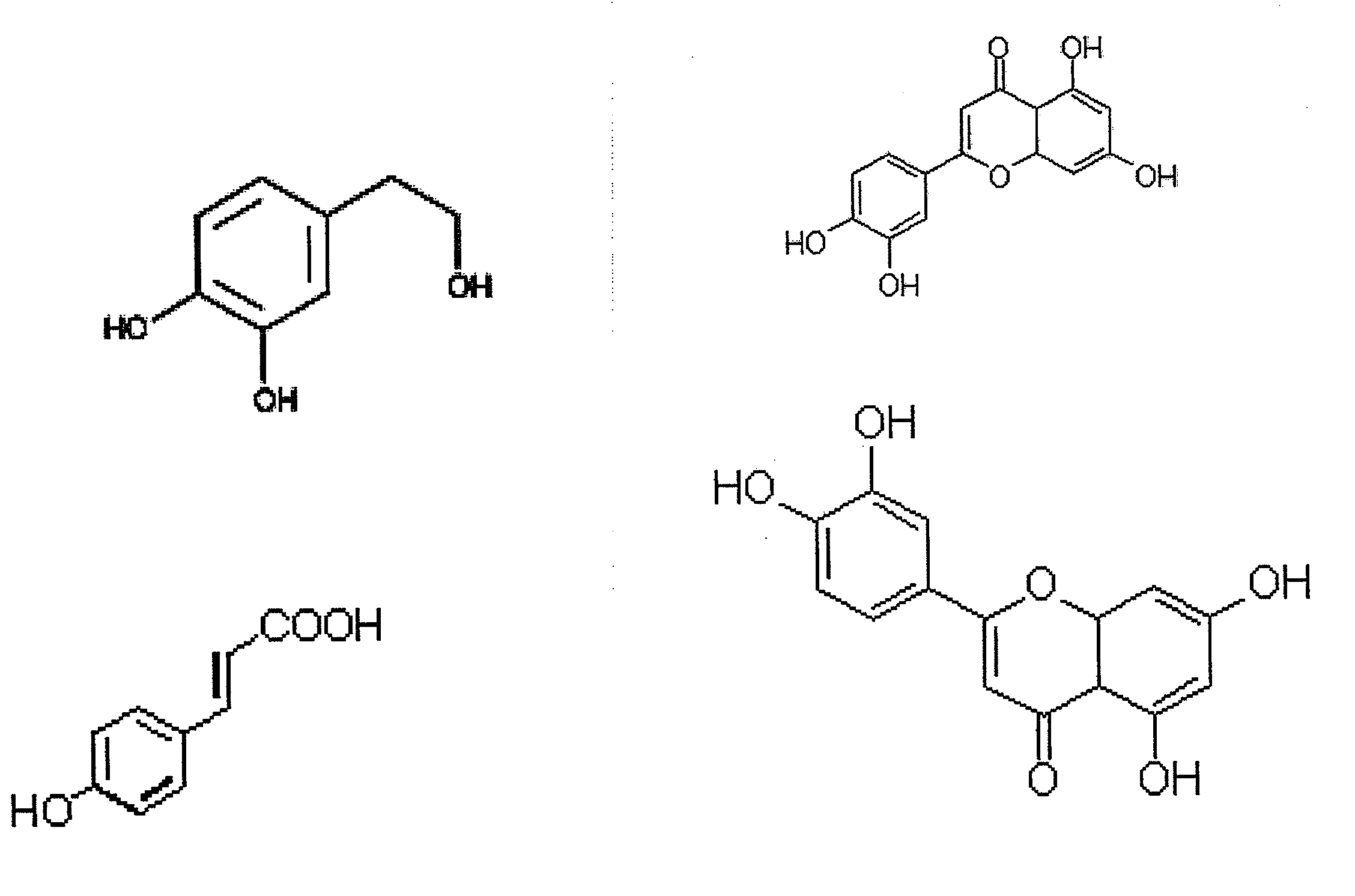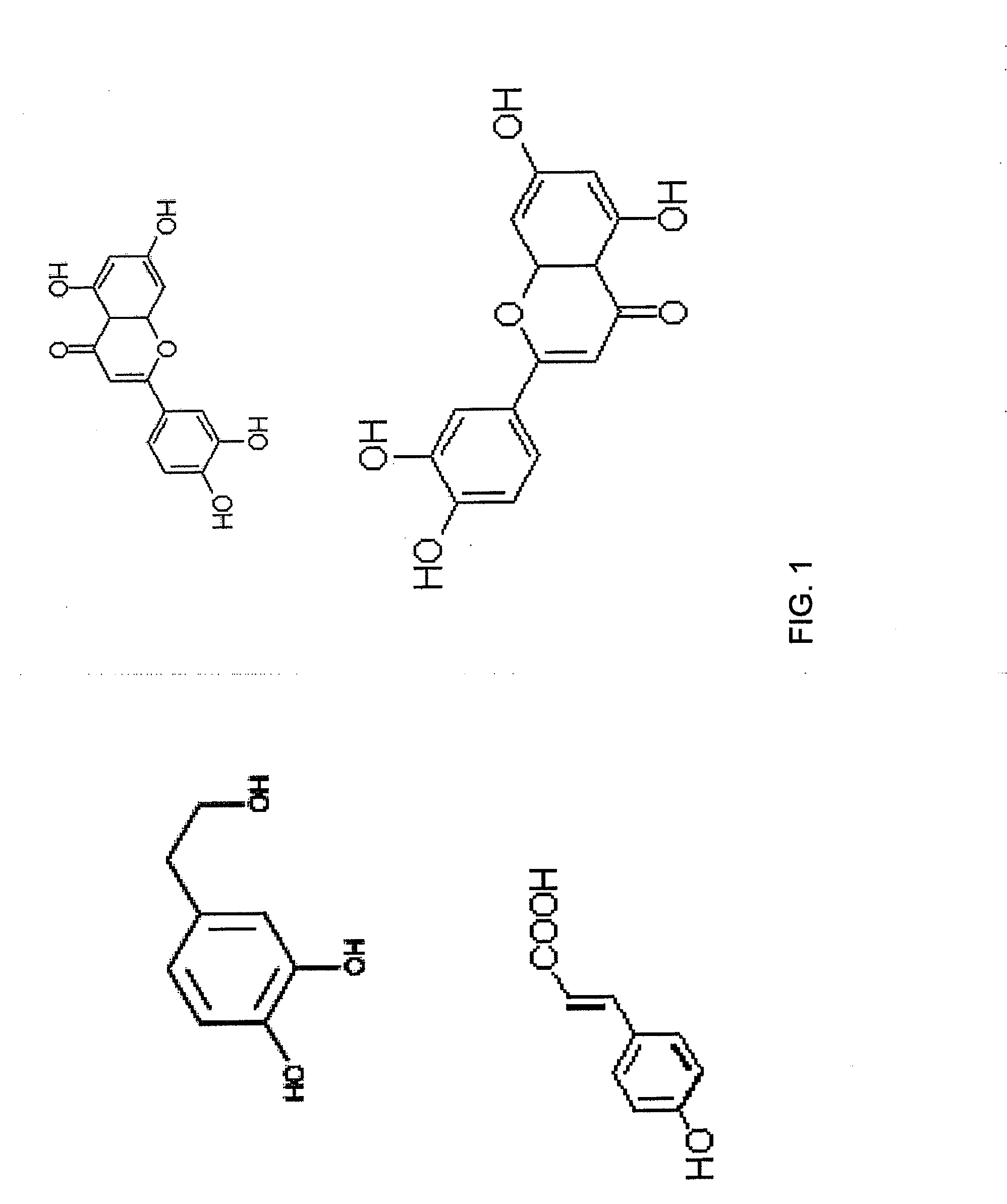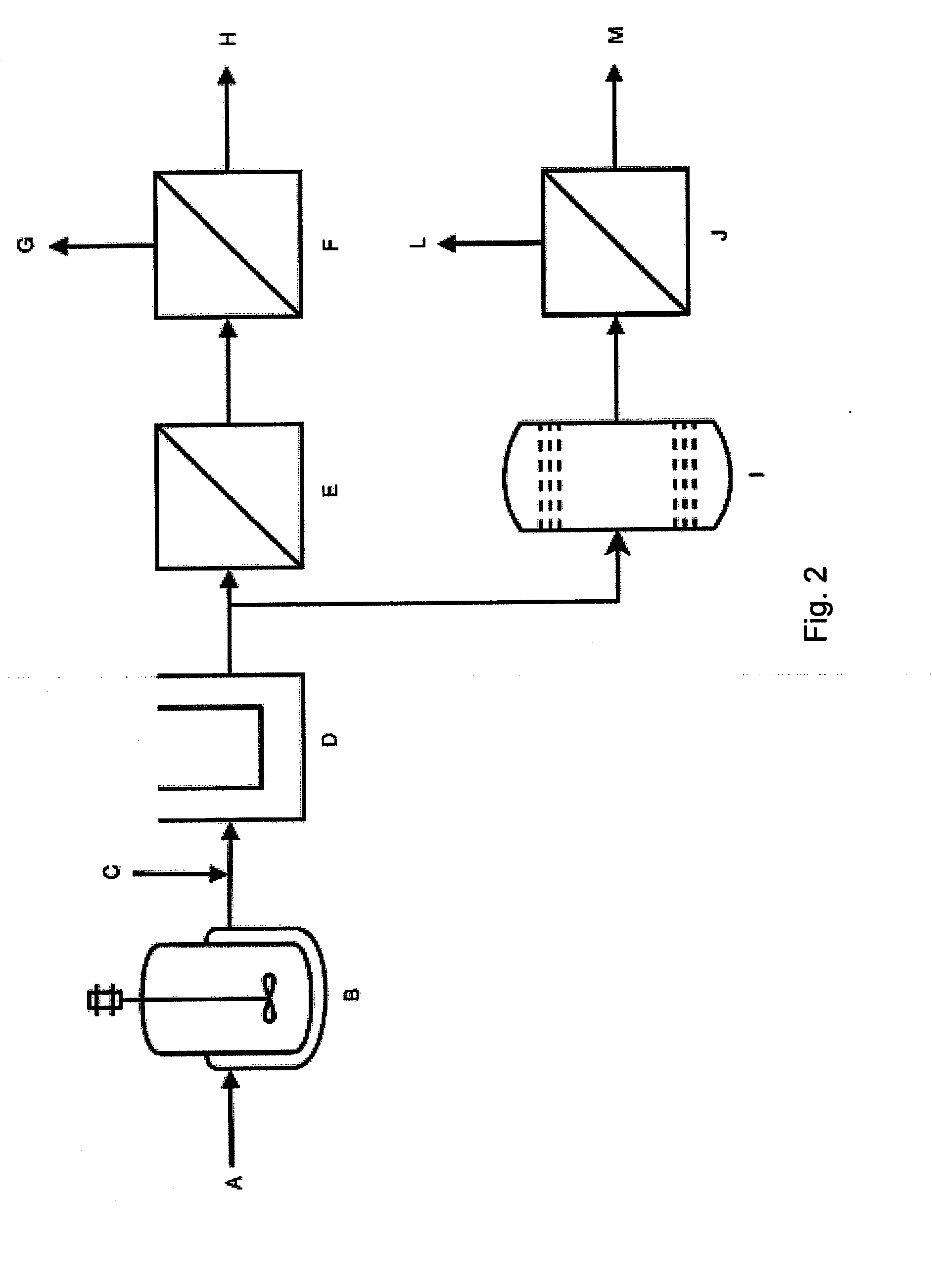Method of obtaining a natural hydroxytyrosol-rich concentrate from olive tree residues and subproducts using clean technologies
a technology of olive tree residues and concentrates, applied in the field of clean technology, can solve the problems of loss of 98% of biophenolic compounds
- Summary
- Abstract
- Description
- Claims
- Application Information
AI Technical Summary
Benefits of technology
Problems solved by technology
Method used
Image
Examples
example 1
[0059]Production of a polyphenolic-rich concentrate containing hydroxytyrosol through an integrated procedure comprising extraction with biocompatible solvents and subsequent fractionation by supercritical fluid extraction.
[0060]300 g of semi-solid residue from a two-phase olive oil process were extracted with 900 ml of a hydroalcoholoc solution with a volume ratio of 90:10 (ethanol:water). The extract recovered was centrifuged and the supernatant was fed with a supercritical fluid extraction column with a structured packing supplied by Sulzer; the column was 4 m high, with an internal diameter of 4 cm. The liquid feed was extracted countercurrently with supercritical carbon dioxide. 500 ml of extract were recovered from the column. This extract was analysed by liquid chromatography and the corresponding chromatogram is presented in FIG. 3. This figure shows the chromatograms obtained for: (a) a rich-concentrate obtained by supercritical extraction; (b) the corresponding feed soluti...
example 2
[0061]Production of a polyphenolic-rich concentrate containing hydroxytyrosol using an integrated nanofiltration / revere osmosis procedure.
[0062]250 ml of an aqueous extract, obtained from leaching of an olive cake with water at ambient temperature, was fed to a nanofiltration unit where it was processed at an absolute pressure difference of 1 MPa. 240 ml of permeate were obtained with a recovery yield of hydroxytyrosol of 70%. The permeate obtained was further processed by reverse osmosis operated at 2.5 MPa. The resulting retentate was characterised by liquid chromatography. FIG. 4 shows the chromatograms obtained for (a) aqueous extract fed to the nanofiltration process and (b) the concentrated retentate obtained after the nanofiltration / reverse osmosis procedure described. It is noticeable the increase of the concentration of hydroxytyrosol and tyrosol in the stream produced by nanofiltration / reverse osmosis. The nanofiltation membrane was a Desal DK, from General Electric, with ...
example 3
[0063]Characterization of the anti-microbial activity of a hydroxytyrosol-rich concentrated extract, produced by nanofiltration / reverse osmosis.
[0064]The anti-microbial activity of a hydroxytyrosol-rich concentrated extract obtained by integrated nanofiltration / reverse osmosis was evaluated by adding different concentrations of this extract to animal cell cultures infected with the bacteria Ehrlichia ruminantum. FIG. 5 shows that the percentage of dead bacterial cells raises up to 80% after exposure to the extract.
PUM
| Property | Measurement | Unit |
|---|---|---|
| temperature | aaaaa | aaaaa |
| temperature | aaaaa | aaaaa |
| temperature | aaaaa | aaaaa |
Abstract
Description
Claims
Application Information
 Login to View More
Login to View More - R&D
- Intellectual Property
- Life Sciences
- Materials
- Tech Scout
- Unparalleled Data Quality
- Higher Quality Content
- 60% Fewer Hallucinations
Browse by: Latest US Patents, China's latest patents, Technical Efficacy Thesaurus, Application Domain, Technology Topic, Popular Technical Reports.
© 2025 PatSnap. All rights reserved.Legal|Privacy policy|Modern Slavery Act Transparency Statement|Sitemap|About US| Contact US: help@patsnap.com



